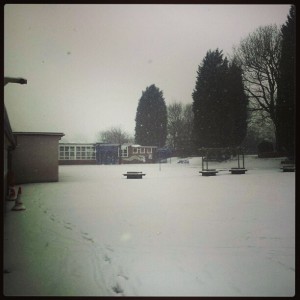First of all you’ve got to have a purpose for mobile technology. As I previously stated, my purpose is threefold: use, danger and expense. But behind all that is the belief that the the ideal device for mobile learning is the brain and the best thing to educate the brain of a child is a learned adult.
So with that as a given, how have we gone about it? Well, in five steps:
- You need some technology that works. Something that the children can access on any device and use productively. We chose Google Apps and used it for a year before looking into any mobile devices. We have also used Education City and are looking at changing our MIS system to an entirely cloud-based one called Aspen.
- You need to try some mobile devices. It’s no good allowing this to happen if the staff haven’t used them at all. We got some Chromebooks into school and have recently been trialling some iPads courtesy of XMA.
- You need to send some devices home. I called this SOOD – Send Our Own Devices. It’s a bit different from BYOD because it involves us as a school sending some devices home. I think this is an important step because it shows families that you trust them and allows you to try out a small test group of children and see what happens when they have a device with them 24/7. If we could afford it, I’d love to go SOOD for our whole school, but we don’t have the budget.
- You need to beef up your wifi. We got a system called Meraki which is cloud-based and allows me to monitor what happens on the network. I’ve setup a free open network for students using this. Ideally this would not have a proxy filter system as changing a proxy on a device can be a bit of a fiddle, but I don’t have that luxury at the moment – I still have to teach the children how to input for a proxy in school and a direct internet connection at home.
- You need to make it easy for your families to buy devices. There are various schemes out there, but we’re about to go for a system called All Learn by XMA – they setup a monthly payment portal for parents, insure the devices against breakage and insure the school against non-payment – it’s a win-win!
Now, I’m not going to lie here. We’ve only got to step 4 in my school. The rubber is going to really hit the road with Step 5 over the next six months – I’ll let you know how it goes…


